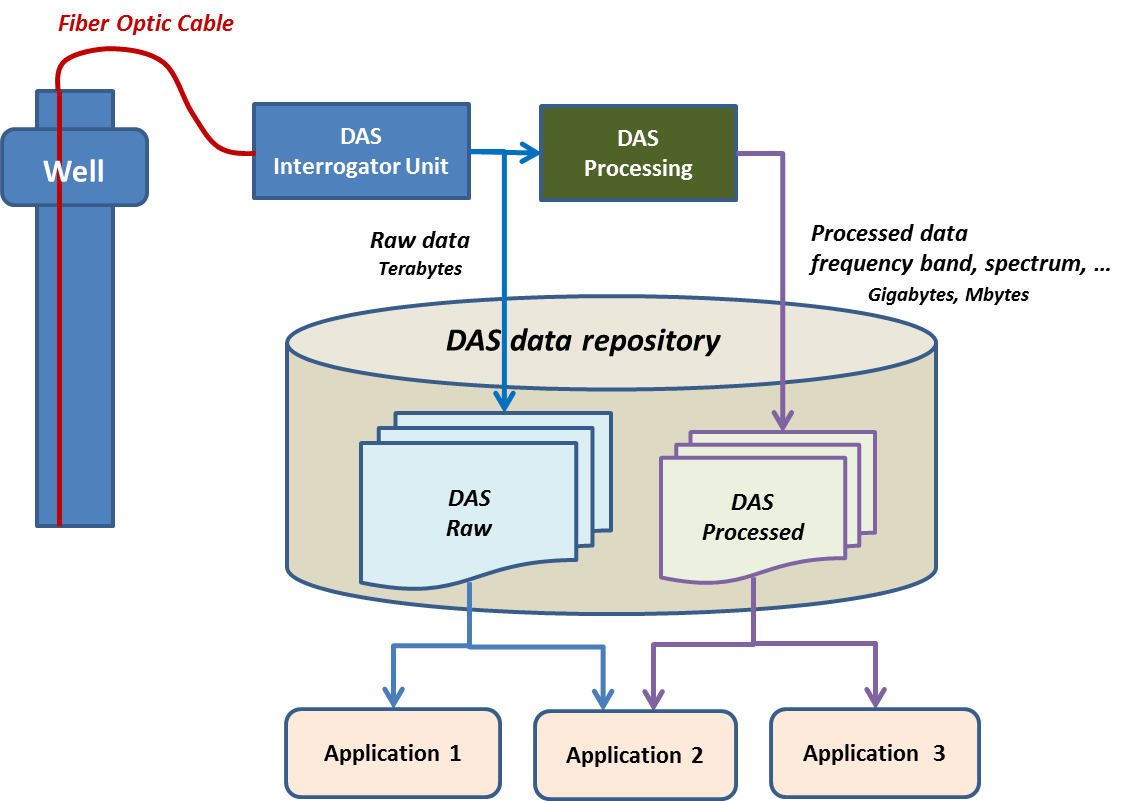17.1 Overview of DAS
| Topic Version | 1 | Published | 12/09/2016 | |
| For Standard | PRODML v2.0 | |||
Distributed acoustic sensing (DAS) is a fiber optic technology used for oil and gas surveillance applications, which include wellbore, pipeline and surface facility monitoring. DAS datasets are used as input to many production surveillance software applications. Examples of downhole applications include monitoring of flow, hydraulic fractures, and seismic surveys. Examples of surface applications include monitoring of pipelines, intrusion detection, and equipment vibration.
At a high level, here’s how DAS works (Figure 17.1-1): Oil and gas assets, such as wells and pipelines, are outfitted with optical fibers (fiber optic cable). Acoustic sources create small vibrations of the fiber, and DAS interrogator systems measure tiny variations in the back-scattered light caused by these vibrations—which essentially turns the fiber itself into a sensitive distributed sensor that can measure acoustic, temperature, and strain variations over distances of many kilometers.
The data collected by the DAS interrogator unit is often referred to as raw data and is further processed; this processing often includes data reduction, filtering of frequency bands of interest, or transformations into spectrum data. Processed datasets that are commonly provided to customers are frequency band extracted (FBE) data and Fourier transformed spectrum datasets. Surveillance software applications derive information from both raw and processed datasets.

For a quick overview or to be able to make a presentation to colleagues, see the slide set: Worked Example DAS.pptx which is provided in the folder: energyml\data\prodml\v2.0\doc in the Energistics downloaded files.